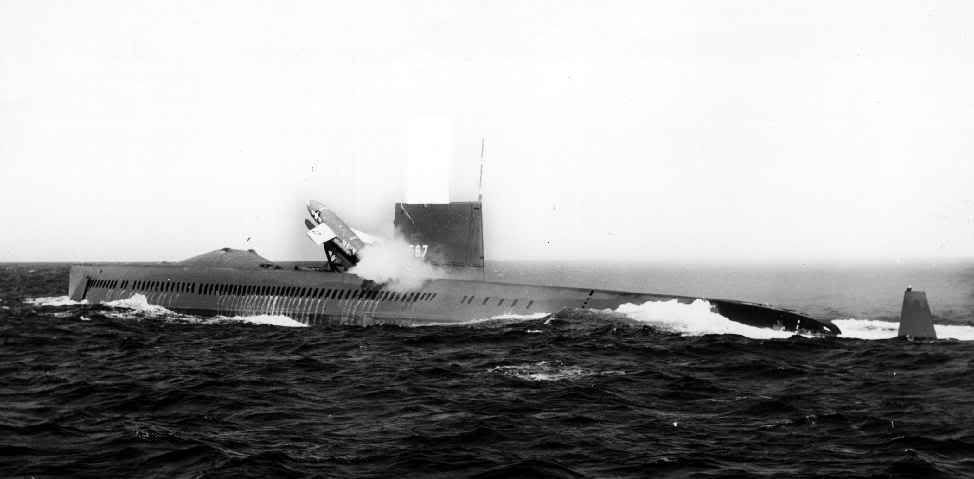 On March 11, 1968, the K-129, a Soviet Golf-II class diesel-electric submarine carrying nuclear missiles, imploded and sank northwest of the island of Oahu.
On March 11, 1968, the K-129, a Soviet Golf-II class diesel-electric submarine carrying nuclear missiles, imploded and sank northwest of the island of Oahu. The cause of the maritime disaster is still debated by Russian and American officials. The incident is one of many enduring mysteries of the Cold War.
Yesterday, U.S. military brass gave Russian authorities a videotape and archival documents from two U.S. attempts to salvage the nuclear submarine. Among the materials handed over to Russian authorities were the bell from the K-129, a camera used by a sailor aboard the sub and a video of a burial at sea given by the U.S. Navy for six Soviet sailors whose bodies were discovered during efforts to salvage the vessel.
The Russian military has long believed that the K-129 was attacked by a U.S. sub, the USS Swordfish. To the contrary, the U.S. Navy says the K-129 sunk following an internal explosion. U.S. officials add that the Swordfish was 3,200 km away from the K-129 when it sank.
Much of the information given to Russian officials yesterday had previously been revealed. The evidence has not been sufficient to convince Russian hardliners that the K-129 sunk of its own accord.
"There is just one version–that [the K-129] collided with an American submarine," comments Soviet Navy Captain Pavel Dementyev.
The U.S. carried out salvage operations in 1968 and again in 1974. The 1974 effort was commissioned by the CIA. The mission, which remains the deepest salvage operation ever attempted, was called "Project Jennifer."
The operation was so sensitive that the U.S. government succeeded in persuading New York Times investigative reporter Seymour Hersh to delay publication of a story about the K-129 for a year.
The Russians allege that the U.S. removed nuclear warheads and other secret technology from the K-129. Apparently, the U.S. should have just left the nukes there off Oahu ready to explode at any moment.
During "Project Jennifer," the salvage ship Glomar Explorer tried to raise the K-129, but the sub broke into pieces. Some sections were recovered.
On Monday, the U.S. also gave Russian officials a list of nine U.S. aircraft believed to have been shot down by Soviet forces in the Far East between 1951 and 1956. U.S. officials are hoping the Russians will help account for what happened to the 77 crew members involved in those crashes.

Golf-II class submarine.




1 comment:
Read 'Red Star Rouge' as it may give additional information on this event. Of particular note is that the United States says it recovered only the forward section of the K-129, containing two nuclear tipped torpedoes. However, the ships bell of K-129, returned to the Soviets at the end of the cold war, was located behind the missile control room in the submarines sail, and recovered much further back than acknowleged by American intelligence.
'Red Star Rouge' portrays a very distrubing hypothesis of a Rouge Russian submarine potentially starting a war between the United States and Russia.
Very good reading.
Post a Comment